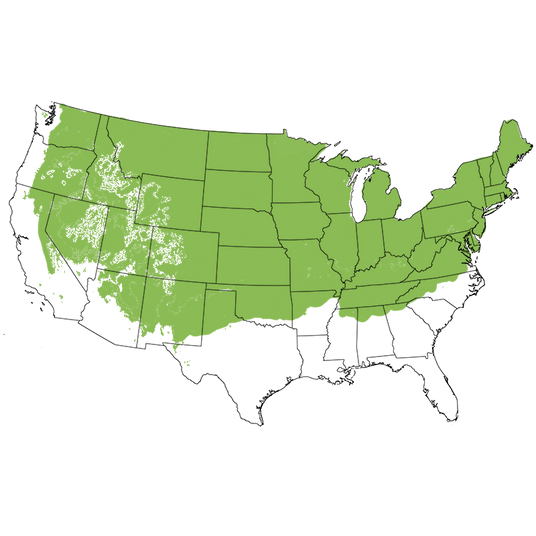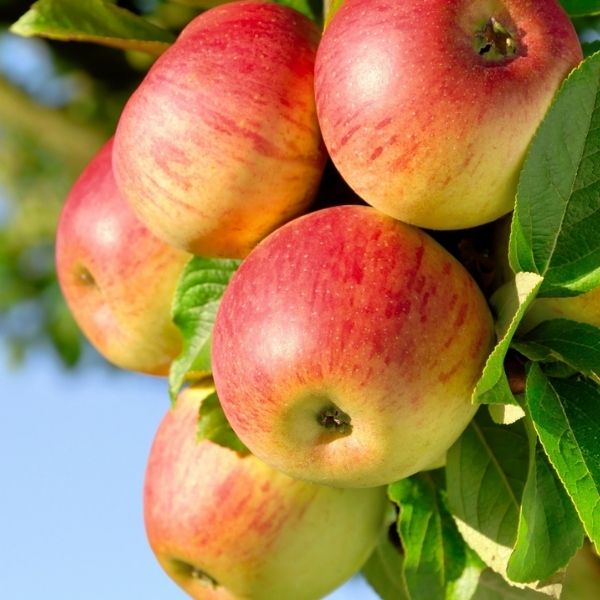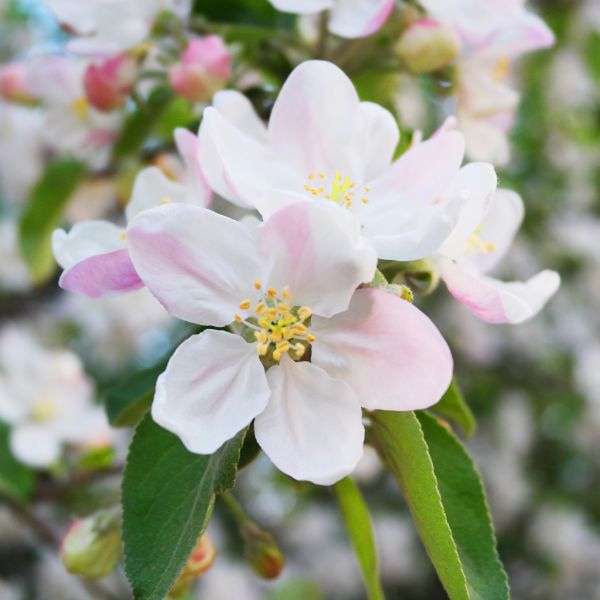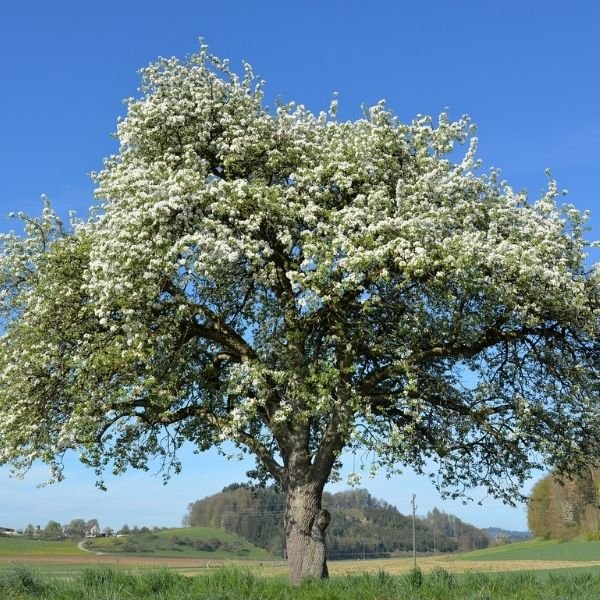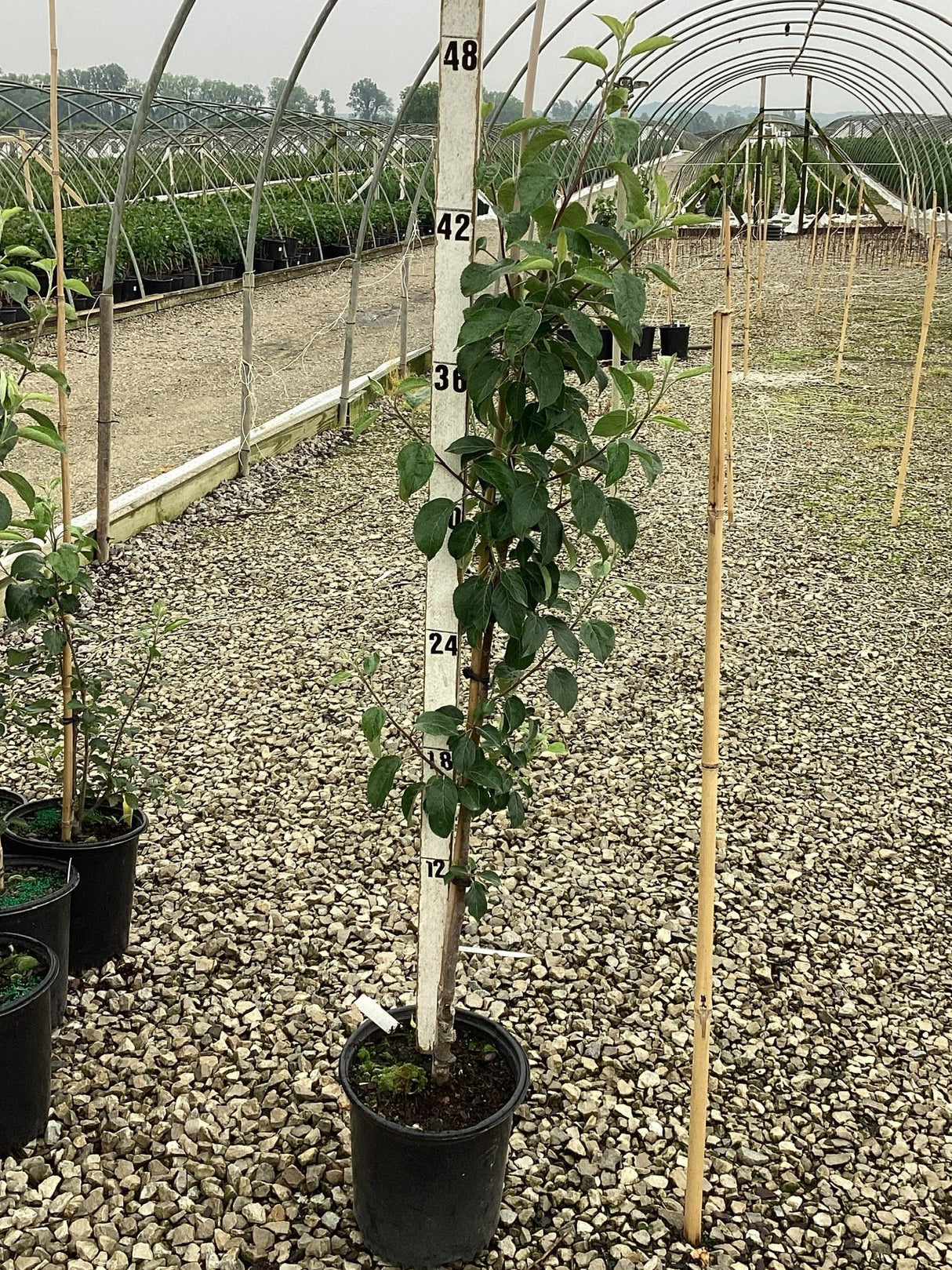Honeycrisp Apple Tree
Malus 'Honeycrisp'
Plant Sentry™
Plant Sentry™

Plant Sentry™ Protected
Your order is protected by our compliance system that:
- Prevents restricted plants from shipping to your state
- Ensures plants meet your state's agricultural requirements
- Protects gardens from invasive pests and diseases
Delivery and Shipping
Delivery and Shipping
Delivery and Shipping
Fast, Safe Plant Delivery
Ships in 3-4 business days • Tracking provided • Weather protected
| Under $50 | $9.99 |
| $50 - $99.99 | $14.99 |
| $100 - $149.99 | $16.99 |
| $150 - $198.99 | $24.99 |
| $199+ | FREE |
✓ Zone-specific timing • ✓ Professional packaging • ✓ Health guarantee
Understanding Plant Options
Nature Hills offers plants in two main formats:
- Container Plants: Grown in pots with soil, sized by container volume and plant age
- Bare Root Plants: Dormant plants without soil, sized by height measurements
Container Plant Sizes
Container sizes indicate plant age and growing capacity rather than liquid volume equivalents. Our containers follow industry-standard nursery "trade gallon" specifications, which differ from standard liquid gallon measurements.
Young Plants (6 months to 18 months old)
| Container Size | Actual Volume | Metric Equivalent |
|---|---|---|
| 2" x 2" x 3" | 0.18 - 0.21 dry quarts | 0.20 - 0.23 dry liters |
| 4" Container | 0.31 - 0.87 dry quarts | 0.35 - 0.96 dry liters |
| 4.5" Container | 0.65 dry quarts | 0.72 dry liters |
| 6" Container | 1.4 dry quarts | 1.59 dry liters |
| 1 Quart | 1 dry quart | 1.1 dry liters |
| 5.5" Container | 1.89 dry quarts | 2.08 dry liters |
Established Plants (18 months to 2.5 years old)
| Container Size | Actual Volume | Metric Equivalent |
|---|---|---|
| 2 Quart | 2 dry quarts | 2.2 dry liters |
| #1 Container | 2.26 - 3.73 dry quarts | 2.49 - 4.11 dry liters |
| 5" x 5" x 12" | 3.5 - 4.3 dry quarts | 3.85 - 4.74 dry liters |
Mature Plants (2-4 years old)
| Container Size | Actual Volume | Metric Equivalent |
|---|---|---|
| #2 Container | 1.19 - 1.76 dry gallons | 5.24 - 7.75 dry liters |
| #3 Container | 2.15 - 2.76 dry gallons | 8.14 - 12.16 dry liters |
Large Plants (3-5 years old)
| Container Size | Actual Volume | Metric Equivalent |
|---|---|---|
| #5 Container | 2.92 - 4.62 dry gallons | 12.86 - 20.35 dry liters |
| #6 Container | 5.25 - 6.01 dry gallons | 23.12 - 26.42 dry liters |
| #7 Container | 5.98 - 6.53 dry gallons | 26.34 - 28.76 dry liters |
Bare Root Plants
Bare root plants are sold by height from the root system to the top of the plant. Plants may exceed minimum height requirements.
Common Sizes:
- Trees: 1 foot, 2 feet, 3 feet, 4 feet, 5 feet, 6 feet
- Shrubs & Perennials: 1 foot, 18 inches, 2 feet
Important Notes
Container Volume Specifications
- Trade Gallon Standard: Our containers follow industry-standard "trade gallon" specifications established by the American National Standards Institute (ANSI Z60.1) for nursery stock
- Volume Variations: Actual soil volume may vary due to plant root systems and growing medium settlement
- Age Indicators: Container size primarily indicates plant age and maturity rather than liquid volume equivalents
Growing Conditions
- Plant size can vary based on variety and growing conditions
- Container size helps indicate plant maturity and establishment level
- Larger containers generally mean more established root systems and faster landscape establishment
Seasonal Availability
- Bare root plants are available seasonally when dormant
- Container plants are available throughout the growing season
- Specific varieties may have limited availability in certain sizes
Questions?
For questions about specific plant sizes or availability, please contact our plant experts who can help you choose the right size for your landscape needs.

Plant Sentry™ Protected
Your order is protected by our compliance system that:
- Prevents restricted plants from shipping to your state
- Ensures plants meet your state's agricultural requirements
- Protects gardens from invasive pests and diseases
Plant Profile & Growing Essentials
Flowering, Cold hardy, and Edible
Specifications
Specifications
-
Botanical Name
-
Height
-
Width
-
Growing Zones
-
Sunlight
-
Growth RateModerate
-
Flower Color
-
Leaf Color
-
Fall Color
-
NativeYes
-
Pollinator FriendlyYes
-
Pollinator Required
-
FragrantYes
-
Bloom PeriodLate Spring
-
Does Not Ship ToAK, CA, HI, ID, MT, OR
Planting & Care
Planting & Care
Crisp & Sweet, Popular Honeycrisp Apple Tree
- Explosively Crisp, Coarse Texture, Light & Very Juicy
- Mid-Season Prolonged Harvest
- Hardy & Adaptable To Warmer Climates Zones 4-9
- Plant With Suggested Pollinator Partner For The Biggest Harvest
- Bears Fruit at Young Age
- Round Fruit - Dappled Red Color Over Yellow
- Outstanding Storage Life
- High Chill 700 - 1000 Hours
Foodies and gardeners, rejoice! Our top-quality Honeycrisp Apple Tree, with a taste that rivals even the great Fuji Apple, can be grown in your home garden. This apple was bred primarily for taste and its ability to grow in extreme cold.
Unlike other commercial apples, the Honeycrisp wasn't bred to grow, store or ship well. But once people tasted Honeycrisp, the market demand for this delicious apple forced grocery distributors to find a way to get it onto store shelves.
With larger cells than other apples, Honeycrisp literally explodes with sweet juice when you bite into it. Beautiful skin is snappy, yet thin - a perfect complement to the crisp flesh - which has just the right balance between sweetness and acidity.
If you have had the pleasure of biting into a Honeycrisp apple bought at your local market, then the thought of that sweet tang and solid crunch is probably making your mouth water right now. But coming out of storage to be shipped to the grocery store does not provide the excellent sweet and tart flavor experience that comes from a fresh-picked Honeycrisp from your own backyard.
Imagine how that apple would taste fresh from your own tree. Sweeter, juicier, firmer, and just plain better! Plus, you have the added comfort of knowing just what went into (or didn't go into!) those fresh eating apples before they appear on your family's table.
A wonderful snack, each Honeycrisp apple has about 80 calories. These powerhouses also have pectic fiber, Vitamin A and C. Grow your own to eat clean.
Congrats to the University of Minnesota for this delightful apple variety, another prizewinning introduction. Recent DNA testing indicates that the parentage includes Keepsake, Golden Delicious and heirloom Duchess of Oldenburg varieties. This is such a successful variety in the more extreme cold climates of Growing Zones 4 and 5. No wonder the state fruit of Minnesota is a Honeycrisp Apple!
This tree grows to an ideal size for an urban or suburban garden and can be kept smaller with pruning. Plant it in well-drained soil, in full sun for optimal growth and plant another variety close by to aid in pollination, if you want the best possible yield.
The Honeycrisp apple is consistently one of the best-selling apples on the market and the price and availability often reflect that. Getting a Honeycrisp apple tree from Nature Hills is a healthy investment in your family's future.
How to Use Honeycrisp Apples
The Honeycrisp is known for its long hang time on the tree. That means your harvest is extended over a longer period than most apple varieties. The quality just continues to get better with each apple picked. The round yellow fruit produces a red blush as it ripens in September and they don't immediately drop upon ripening, so you can take your time picking them.
Delicious Honeycrisp apples are yellow with a speckled reddish-pink blush. The crisp white flesh is well-balanced between honey-sweet and tart and has a wonderful floral aroma.
Of course, as a fresh-eating apple, it's hard to beat a Honeycrisp. Use them in salads, and slaws, or dip them in melted caramel for a luscious fall treat. They'll hold up to pie baking, and you can freeze bags of sliced Honey crisps.
These apples also retain their pigment well and have a relatively long shelf life when they're stored in cool, dry conditions. Honeycrisp will store well in a cool, dark, dry location for up to 3 months and 6 months in refrigeration.
#ProPlantTips for Care
Today, home gardeners across the United States can grow Honeycrisp apples in either cold or hot apple-growing regions. This includes the upper Midwest, West Coast, Northwest and Northeast.
Honeycrisp performs beautifully in climates with higher summer humidity. It handles extreme cold and high humidity with no problems.
It is adapted to a wide range of soil types and will even tolerate heavy clay if the drainage is good. Once established, most apples require less water. When a layer of mulch is applied to cover the root system, apple trees become quite drought-tolerant.
Full sun is best for most fruit production, and good air circulation is always great for fruit trees.
Hold this tree to any size with annual summer punning. We recommend that home gardeners maintain their trees to below 10 feet with 7 to 8 feet being the ideal height. Maintain your trees low to assure ease in providing maintenance and harvesting.
Honeycrisp needs a pollinator partner for the best fruit set. Consider using Centennial or Chestnut Crabapples, or a Cortland, Cox's Orange Pippin, Crimson Crisp, Cripps Pink, Cripps Red, Empire, Freedom, Frostbite, Fuji, Gala, Ginger Gold, Golden Delicious, Granny Smith, Haralson, Jonathan, SnowSweet, SunCrisp, Sweet Sixteen, Wealthy, or WineCrisp. The mid-season red-blushed Honeycrisp would partner well with an early ripening, a mid-season ripening, or a late-season Apple (listed above) to extend your apple harvesting season to 6 months!
Thinning your fruit is one of the most important maintenance tasks after size control. The Honeycrisp bears young and can sometimes overbear. Thin out small fruit to leave a fists space between fruit to lessen the load of the younger trees and to ensure good fruit size on older trees.
The Honeycrisp is disease resistant in most areas. We take pride in delivering the highest quality plants with healthy roots and full, well-established stems and foliage. Honeycrisp Apple trees are always in high demand. Order now before they sell out!
Honeycrisp Apple Tree Frequently Asked Questions
When to Plant Honeycrisp Apple Trees
Planting Bareroot trees as soon as you can dig a hole in spring and until hot weather, the earlier the better. Plant container Apple trees throughout the growing season with complete success - that is the benefit of container plants - to extend the planting season. Your County Agricultural Extension Office is a great resource for first and last frost dates in your area.
How to Plant Honeycrisp Apple Trees
Dig a large hole only as deep as needed to accommodate the bareroot or container root ball, and twice as wide. Add Nature Hills Root Booster to speed root establishment. Remove the pot or bag and situate it into the hole so the top of the soil (soil line if bareroot), is level with the new location's soil being careful not to plant too deep. Water in again very well and backfill with the same soil you dug up, tamping down gently to ensure there are no air pockets.
Top off with a 3-4 inch thick layer of Arborist mulch. Consider staking your tree to keep its trunk growing straight for the first year to ensure it stands tall against strong winds and drifting snow.
When to Prune Honeycrisp Apple Trees
Trim off any broken branches from delivery as soon as you take them out of the box. Prune and trim apple trees while dormant, in late winter or early spring, before you see new growth.
How to Prune Honeycrisp Apple Trees
Dormant prune to:
- Remove any double leaders or narrow crotch angles
- Eliminate any crossing branches
- Thin interior branching and leave the fruiting spurs and strong branches in place opening up the canopy
- Branching at least 24-36 inches above the ground
Prune Apple trees in the summer to:
- Control size and shape by reducing the length of longer new growth on vigorous trees
- Remove water sprouts on the main trunk or older branches in the crown
- Remove suckers at the base of the trunk
- Thin fruit during heavy years on established trees
How to Care for Honeycrisp Apple Trees
Growing an apple tree is easy when proper soil, good drainage, attention to moisture, and regular fertility are maintained. Once you've chosen an apple tree that works for your climate, in the size you need for your landscape, and its pollinator (if needed), then you've accomplished half the battle!
- Apple trees do best in full sun and well-drained soil
- Water your apple trees when it gets dry - especially during the fruit production stage, and drought periods to keep them stress-free
- Use arborists' wood chips to mulch over the roots of your apples and have your soil tested to see what your soil may be lacking before adding fertilizers
- Maintenance pruning and shaping
Honey Crisps tolerate a wide range of soils, so long as water and nutrients are not limited and the pH level is adequate.
How to Fertilize Honeycrisp Apple Trees
For the first year, water alone is most important. It is always best to get a soil test to see what your soil is lacking before adding more fertilizers. Once established, a fertilizer routine may be beneficial. We do offer some excellent slow-release organic options, applied according to the package directions.
Fruit trees need more phosphate and it's possible to apply too much nitrogen which affects the soil's pH. Test soil acidity or alkalinity using a pH Tester.
Fertilize in spring when you first see new growth emerging.
- Don't overdo it
- Phosphates are your friends
- Pay attention to pH in areas with extremely high or low soil pH
- Follow the directions
Honeycrisp Apple Tree Pollinating Info
Honeycrisp is partially self-fruiting and doesn't need a pollinating partner, but will bear far more fruit when paired with these varieties:
- Centennial or Chestnut Crabapples
- Cortland
- Cox's Orange Pippin
- Crimson Crisp
- Cripps Pink or Cripps Red
- Empire
- Freedom
- Frostbite
- Fuji
- Gala
- Ginger Gold
- Golden Delicious
- Granny Smith
- Haralson
- Jonathan
- SnowSweet®
- SunCrisp
- Sweet Sixteen
- Wealthy
- WineCrisp™
Harvest Times for Honeycrisp Apple Trees
Honeycrisp's are typically ready to harvest in August.
Early-Season? Mid-Season? Late-Season? The terminology can be confusing for new apple tree growers. Weather, climate and your tree determine when it's ripe.
For Apples:
- Early-season is usually June-July
- Mid-season can be August-September
- Late-season can be from late September-November
The growing season consists of spring, summer, and fall, and varies with climate and weather. Areas with longer growing seasons in the warmer hardiness zones can greatly affect the harvest times for each particular apple variety grown in your area.
Rootstocks Explained
Apple trees have been grafted onto different rootstocks since before the mid-1800s. Different rootstocks are used to improve the anchoring of trees, eliminate diseases, and reduce the natural mature size of the tree itself. While there are many different types of rootstock, they are all labeled as being either Dwarf, Semi-Dwarf, or Standard.
The apple descriptions, including flowering, pollination, and apple characteristics are the same whether the plant is grown on a standard rootstock or some varying dwarfing rootstock. The overall size can vary by climate and soil but the understock used is ultimately what affects the mature size.
There will be some variation in sizes but as a guide, we are suggesting the overall mature size of these apple varieties are:
Semi-Dwarf Apples
- Height: 12-18 feet
- Spread: 10 - 15 feet
Standard Apples
- Height 18 - 25 feet
- Spread: 15 - 18 feet
Remember that all fruit tree sizes can easily be altered if needed by simple pruning as the trees grow and develop.
How long does it take a Honeycrisp Apple tree to bear fruit?
Nature Hills ships plants with mature root systems and the trees you'll receive plants already 2-4 years of age. Honeycrisp Apple Trees produce fruit between 3-5 years of age, so you won't wait long to see your first harvest.
Will a single Honeycrisp apple tree produce fruit? Do you need two Honeycrisp Apple trees?
Honeycrisp apple trees are self-fertile but will produce a far larger crop with the help of a pollinator partner. These trees pair great with Gala Apple Tree, Granny Smith Apple Tree, Empire Apple Tree, McIntosh Apple Tree, and Red Delicious Apple Tree.
How big does a Honeycrisp apple tree get?
The semi-dwarf trees can reach 12 - 18 feet in height and standard-height trees can reach 18 - 25 feet in mature height.
